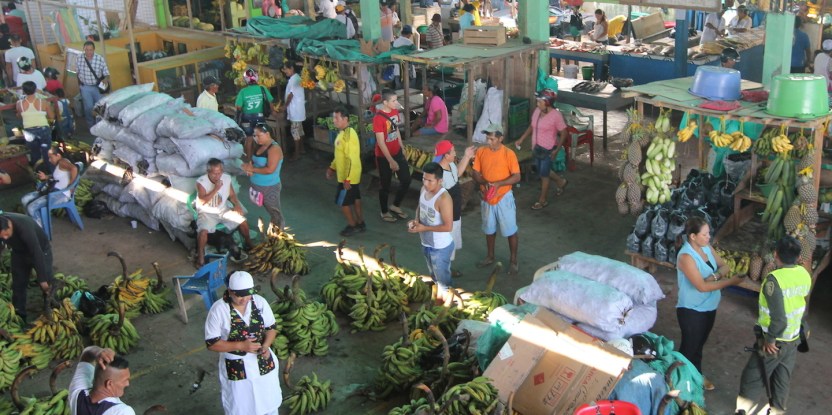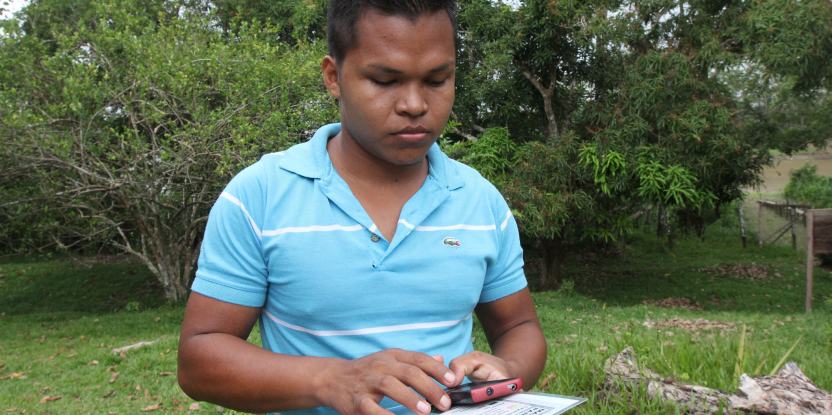
Although continents apart, hunters in the forests of Africa and Latin America can learn from each other’s experiences in wildlife management and the use of bushmeat, according to experts from the Center for International Forestry Research (CIFOR).
“In both the Congo and the Amazon, millions of people depend on wild species for food, and hunting and fishing provide a large percentage of nutrients,” said John Fa, senior research associate at CIFOR and coordinator of the Bushmeat Research Initiative.
In addition to hunting to feed their families, hunters in both the Congo and the Amazon Basins sell some of the wild meat they catch. The income provides a buffer against crop failures or other economic crises, as well as money for household expenses, health care or school fees.
AGAINST OVERHUNTING
But wildlife management is crucial to make sure that hunting—or rather, overhunting—does not have excessive negative consequences for ecosystems, Fa said.
For example, overhunting of a certain animal species could reduce the scattering of the seeds of plants on which it feeds, gradually decreasing the number of those plants and, therefore, the food supply.
“Changing the vegetation changes the food supply, which affects the animal species that can survive in that landscape,” Fa said.
Overhunting can be controlled if hunters know how much game their communities are harvesting, said Nathalie Van Vliet, a senior researcher at CIFOR.
“The problem is that hunters know how much they or their neighbors harvest, but not what others harvest, so they don’t know how much the community harvests as a whole,” she said.
ARMED WITH A NOTEBOOK
Community monitoring can fill that gap. In parts of Africa and the Amazon, hunters are armed not only with shotguns, but also with notebooks or cell phones to record information about where and what they hunt and conditions in the forest.
In Namibia, where hunting—including trophy hunting—is an important source of both income and food for communities, game guards keep detailed records that allow community conservancy committees to monitor impacts and adjust quotas, according to Greenwell Matongo of WWF Namibia.
Matongo was among a group of researchers, government officials and hunters who met in Leticia, Colombia, in October 2015, to discuss regulatory changes for legalizing the sale of bushmeat in Colombia.
Hunters in the Ticoya Indigenous Reserve or resguardo near Leticia, along the Amazon River where the borders of Colombia, Brazil and Peru converge, are experimenting with a cell phone app to help them track wildlife.
I think there are fewer differences between a hunter in Gabon and a hunter in the Amazon than a hunter in Gabon and a city dweller in Gabon
By becoming citizen scientists, hunters gather data that are valuable to their communities and to researchers, said Brian Child, associate professor in the geography department and the Center for African Studies at the University of Florida.
“People love it—it’s so empowering. They love learning, they love doing graphs, they love understanding what the data are saying, they love presenting it back to communities,” Child said of community-based wildlife monitoring.
“That’s where the real gain is—in the communities themselves becoming paraprofessionals and collecting, analyzing and responding to data,” he added.
A TALE OF TWO BASINS
Although both the Amazon and Congo Basins include expanses of tropical forest that is home to bushmeat hunters, the two regions differ in some significant ways.
The Congo Basin has less than half as much dense forest—1.6 million square kilometers, compared to 3.9 million square kilometers in the Amazon—and more than twice as many inhabitants as the Amazon.
Research in the past seemed to indicate that substantially more bushmeat is consumed in the Congo Basin than the Amazon. According to one rough estimate from 2010, bushmeat consumption in the Congo basin totaled about 3.2 million tons in one year, compared to just under 1 million tons in the Amazon.
But that estimate and others like it are extrapolated from relatively little data, some of which is old, Van Vliet said. More recent studies show that people continue to consume bushmeat even after moving to cities from rural areas, but further research is needed to understand how consumption patterns change, she said.
Community wildlife management is crucial for adapting to changing circumstances, said Van Vliet, who works with hunters in Colombia and Gabon who are designing hunting management plans.
“The hunters in Gabon realized that they needed to set limits on the hunting of partially protected species in their area,” she said. “The question was where to set the limit, because they did not have data showing how much would be sustainable.”
Van Vliet suggested an adaptive management plan, which would begin by setting the limit at the amount currently being harvested. The hunters would then monitor the impacts and adjust the plan as necessary.
“The problem was that no one knew how much they harvested as a community,” she said. “A community monitoring system provides important information to fill in those gaps.”
The hunters in Gabon—who set a limit of 30 bush pigs a year, based on data showing that they had hunted 28 in 2014—are using a monitoring system similar to one used by hunters in the Ticoya resguardo, which is in the southernmost corner of Colombia, near the Amazon River.
PEN PALS
Van Vliet would like the two groups of hunters to be able to learn from each other’s experiences.
“They face similar challenges,” she said. “I think there are fewer differences between a hunter in Gabon and a hunter in the Amazon than a hunter in Gabon and a city dweller in Gabon.”
While meeting with hunters during a recent trip to Gabon, Van Vliet received messages from hunters in the Ticoya resguardo via the smartphone app WhatsApp, and began to think about ways in which the two groups might be able to communicate.
“The problem is language, but they could exchange photos,” she said.
The hunters in Gabon were especially interested in how the hunters in Colombia managed fruiting tree species to attract certain animals.
“They said they felt wildlife was farther away now than in their grandparents’ day,” she said of the Gabon hunters. “They said that could be due to hunting or to logging, which sometimes removes trees that bear fruit.”
The African hunters were intrigued by the idea of planting some of those tree species closer to their villages to attract animals, as communities in the Ticoya resguardo had done.
“I think these exchanges are very useful,” Van Vliet said. “I learn a lot from looking at these different situations, and I think they would, too.”
We want you to share Forests News content, which is licensed under Creative Commons Attribution-NonCommercial-ShareAlike 4.0 International (CC BY-NC-SA 4.0). This means you are free to redistribute our material for non-commercial purposes. All we ask is that you give Forests News appropriate credit and link to the original Forests News content, indicate if changes were made, and distribute your contributions under the same Creative Commons license. You must notify Forests News if you repost, reprint or reuse our materials by contacting forestsnews@cifor-icraf.org.


